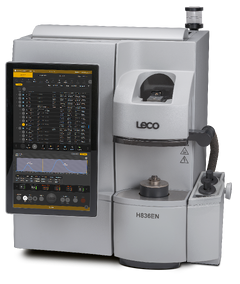During the replacement of the San Francisco-Oakland Bay Bridge’s eastern span in 2013, 277 vertical steel rods intended to improve the replacement’s seismic stability were tested under tension using three-inch-diameter bolts. However, within just two weeks, 32 of the steel rods had snapped.

Image Credit: LECO Corporation
Out of the 277 rods used in the $6.5 billion construction project, only 96 were accessible. Analysis of the failed rods suggested that hydrogen embrittlement during manufacture was the cause of this potentially fatal damage. Thankfully, this was corrected before the bridge opened, but it caused significant construction setbacks.
What is Hydrogen Embrittlement?
Hydrogen embrittlement is a serious concern in construction and manufacturing, with steels and iron being particularly vulnerable to embrittlement.
Due to their small size, hydrogen atoms are capable of permeating the matrix of solid metals. Hydrogen atoms can also be introduced at various steps in the manufacturing process, such as when the metal is molten or during welding, electroplating, or cleaning.
An excess of hydrogen atoms can weaken the metal, making it more prone to cracking and failure. Hydrogen embrittlement tends to cause catastrophic failures that can lead to structural damage, which can have potentially fatal consequences. Therefore, hydrogen embrittlement must be caught before a weakened material is used and placed under stress.
Preventing Hydrogen Embrittlement
Proper precautions can prevent most hydrogen embrittlement during manufacturing. Methods to avoid hydrogen embrittlement mainly focus on minimizing contact between metal and hydrogen sources during production and post-processing. Hydrogen embrittlement can be prevented.
Process parameters must be optimized to allow the metal to remain at a temperature long enough to allow hydrogen diffusion during low hydrogen annealing. This is usually a lengthy process that requires the optimal amount of time and temperature for the hydrogen involved.
Quality Control and LECO’s Instruments
Laboratory testing to determine the quantity of hydrogen in metals is a vital element of quality control to avoid hydrogen embrittlement and potentially catastrophic failures.

Image Credit: LECO Corporation
Whether a material is being tested during fabrication to prevent hydrogen embrittlement or before heat treatment to determine the minimum time necessary for baking, having a hydrogen determinator like the H836EN in the lab is critical for iron or steel production.

This information has been sourced, reviewed and adapted from materials provided by LECO Corporation.
For more information on this source, please visit LECO Corporation.